A mother’s wish: let Allah take him
The hospital echoes with the screams of a refugee boy whose injuries are so severe no amount of morphine can dull the pain.
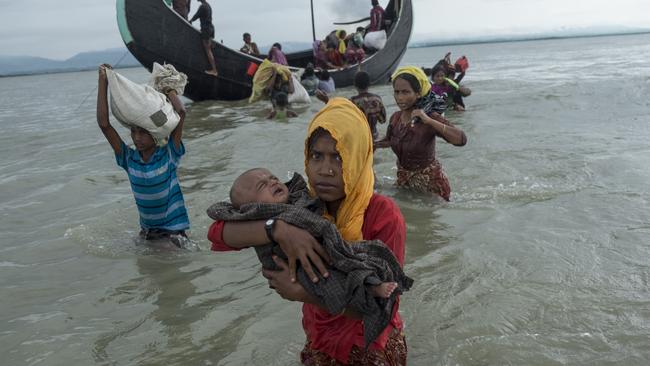
The ageing hospital ward echoes with the screams of a boy whose injuries are so severe no amount of morphine can dull the pain.
“Allah!” Azizul Haq cries out. Then, “Mama.”
The 15-year-old’s tortured mother leans over to stroke one bandaged hand and anxiously smooth his hair. There is nothing else she can do.
The family of eight fled their home in Myanmar’s northern Rakhine State a fortnight ago after the Myanmar military and Burmese Buddhist mobs rampaged through their village and ordered them to run or die.
Four days later they were within sight of the Bangladesh border, her two eldest sons walking ahead of them, when Azizul stepped on a landmine that blew his legs off and also injured his 10-year- old brother.
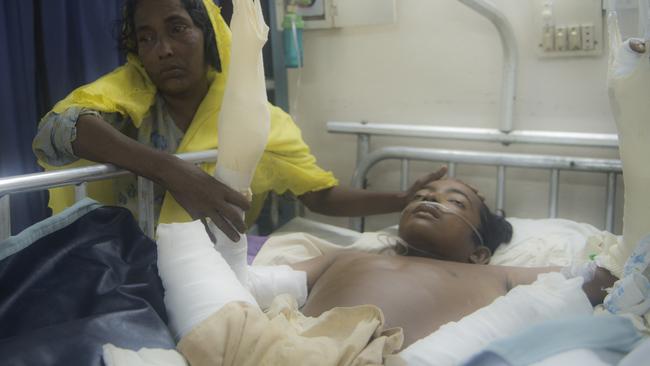
Bangladesh has accused the Myanmar army of laying mines on its side of the border in what appears to be a scorched-earth policy designed to prevent the return of about 389,000 Rohingya Muslims who have fled the country in the past three weeks. The military has denied the charge, which Foreign Minister Julie Bishop warned this week would amount to a “gross violation of international law” if proven correct.
Yet evidence against Myanmar is mounting in hospital wards on the other side of the border. After the explosion, Azizul’s father carried his eldest child in his arms and floated his ruined body across the river that divides the two countries as bullets fired by Myanmar soldiers cracked the water around him.
Bangladesh border guards who heard the explosion sent a car to transport the two wounded boys to hospitals here.
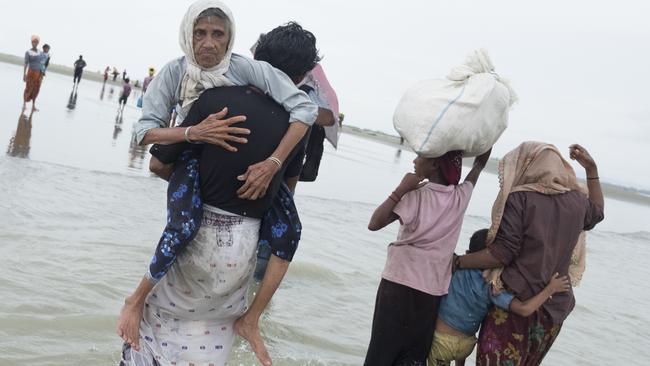
The doctors at the clinic where Azizul is being treated have already performed several surgeries on the extensive injuries to his legs, hands and chest. But the mine was so powerful that mud has compacted in his wounds and there is no more of his rare O-negative blood available for further operations.
“We had no wish to come to Bangladesh,” his mother Roshida tells The Weekend Australian at her son’s bedside. “We don’t know why the military attacked us. They are pushing us from our land.”
Her son’s suffering is so great, she says, it would be better if Allah took him.
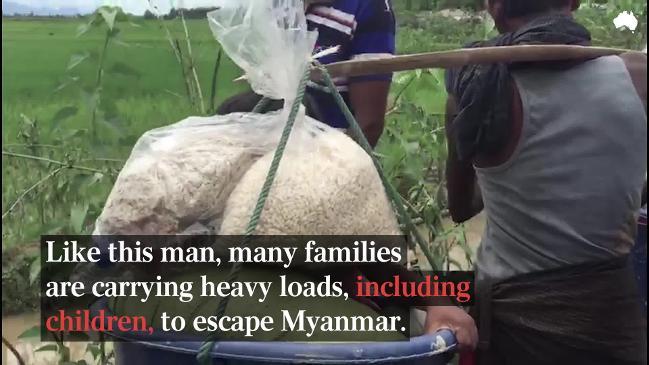
In a bed across the room another anxious parent sits with his little boy. Abu Tahir says the military came to their Maungdaw village in northern Rakhine two weeks ago and set fire to the houses as people ate their evening meal. His family was trying to ease their children through a hole in their fence to escape when soldiers opened fire. His 17-year-old son was killed and his youngest boy, seven-year-old Sufait, shot in the chest. Abu Tahir’s sister was burned alive inside the house.
He scooped up his wounded boy and with the rest of his family headed to the border. “Twice we tried to cross the water but the Burmese navy stopped us from leaving,” Abu Tahir said. “The third time we hired a row boat”.
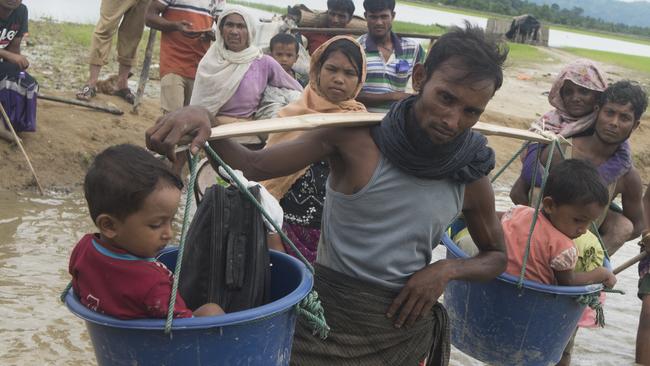
By the time they crossed the Bay of Bengal to the safety of Bangladesh it was a week since Sufait was shot.
There are similar stories and injuries throughout this crowded hospital. It is treating four landmine victims, including one woman, Sabequr Nahar, who also lost both legs. Her son said he saw Myanmar soldiers laying more mines from his hiding spot in the hills above the village.
In a tent pitched in the hospital grounds a 12-year-old girl is recovering after being shot in the eye by soldiers who fired at villagers as they emerged from houses to investigate gunfire. A five-year-old girl has a gunshot wound to the hand. The bullet that wounded her killed her father who was carrying her across the river.
The doctors here say they have seen many patients with large exit wounds at the front of their body, suggesting they were shot from behind as they ran.
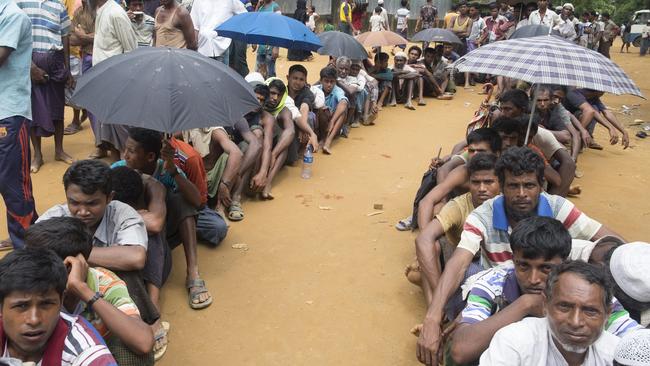
About 60 per cent of the refugees who have crossed the border since August 25, when attacks by Arakan Rohingya Salvation Army militants on security posts sparked ferocious military reprisals, are children. Many have lost a parent. Some have lost both.
At a UNHCR-run temporary orphans centre set up in Kutupalong, one of two long-established Rohingya refugee camps in Cox’s Bazar, Arifa, 15, tells of how the military came to her village of Kinisi and ordered all the children out of the buildings. “The young adults, the men and women, had to stay in the houses,” she said. “They started burning the houses and shooting. Some of the children started to run so we ran too,” she says, gesturing to her eight-year-old brother and sister, 10.
“We saw a lot of dead bodies on the road and on the mountains and as we came to the Bangladesh border the military opened fire on us. We were very scared.”
Later, says Arifa, a woman from their village who escaped found the three children among a group of refugees. “She told us she saw with her own eyes that our father and mother were killed.”
Ten-year-old Ayaz has also been orphaned by the Myanmar military operation and three days ago got his first job in a roadside tea shop near the Kutupalong camp to help support his two sisters, aged 12 and 15.
He watched as soldiers shot his father, the children’s sole surviving parent, in the head and then tried to rape his youngest sister.
“My older sister came and tried to fight them off. We broke free and ran for the mountains,” the boy says as he rushes around the stall, washing dishes and clearing tables. He starts work at 5.30am and finishes after 10pm. For that, his Rohingya boss has promised to pay him 1000 Taka ($15) a month.
“If I don’t support my family, who will do it?” he asks. His sisters cry a lot but he is strong, he insists. “I only think about my father’s death at night. Then I really miss him.”
The last time the Myanmar military swept through Rohingya villages, after October 9 attacks on security forces by the same ragtag militant force which says it is fighting back after decades of persecution, a UN investigation found evidence of possible crimes against humanity.
The key difference this time is scale. Three weeks after the latest violence broke out people are still streaming over the border, piling into impoverished, overcrowded Bangladesh seeking shelter.
At the Anjuman crossing in Cox’s Bazar’s Ukhia district, almost every family is carrying babies and young toddlers. Exhausted children carry other exhausted children.
Some are hauled in buckets and nets looped over carrying poles borne by worn-out men. In a final test of their resolve, they must all negotiate an impossibly slippery, narrow land bridge connecting Bangladesh’s watery border area to the mainland.
A man eases his baby son down at our feet as he runs back to help his young wife, who is carrying her newborn and holding the hand of a little girl. The boy is curled awkwardly inside a net lined with sacking, glassy-eyed and unresponsive. He hasn’t eaten in four days, his father says.
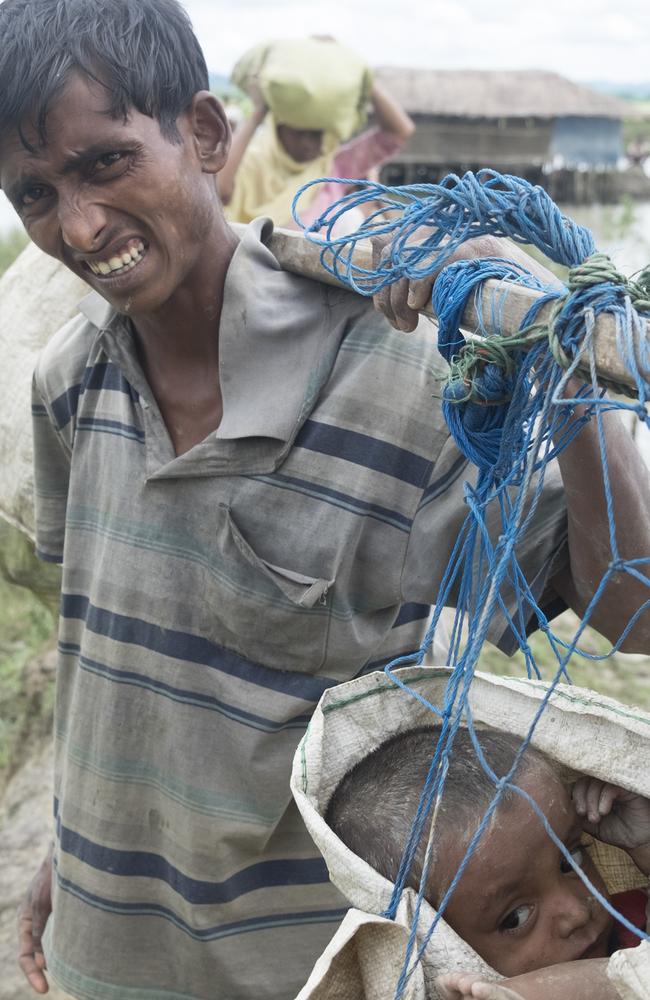
As we wait for his father’s return we give him water and massage his legs, limp from being folded in on each other after a week of hanging from a pole as his family walked to safety.
The bottle of water is passed around half a dozen children and babies, all in distress. Many have been walking for 10 days or more as the military operations move further south, and those fleeing are forced to take longer, more circuitous routes to avoid burning villages, military units and rampaging Buddhist mobs.
People keep coming throughout the morning. Behind them, columns of smoke rise from over the border where yet another Rohingya village is being burned.
This week a Myanmar government-sponsored media trip into northern Rakhine backfired after videos circulated to the group apparently showing Rohingya burning their own villages were discredited by journalists who identified the arsonists in the videos from among Buddhist villagers they met that day.
Amnesty International said yesterday its analysis of satellite imagery, active fire-detection data, ground footage, and dozens of eyewitness interviews, showed an “orchestrated campaign of systematic burnings” targeting Rohingya villages across northern Rakhine. It has detected at least 80 large-scale fires in inhabited areas since the Myanmar army’s latest operation began.
In yet another example of how tone deaf the Myanmar government is to widespread condemnation over its treatment of its 1.1 million Rohingya Muslims, a spokesman for Nobel Peace Prize laureate Aung San Suu Kyi’s administration this week announced 176 Rohingya villages targeted in the latest military “clearance operations” had been emptied. Suu Kyi’s reputation as a human rights champion has been crushed by her refusal to speak out against military-perpetrated violence, and in defence of a Muslim population seen as interlopers in Buddhist-majority Myanmar.
UN human rights chief Zeid Ra’ad al-Hussein has accused Myanmar of what appears to be a “textbook case of ethnic cleansing”. Days later Suu Kyi cancelled her attendance at this month’s UN General Assembly. Following an emergency meeting of the UN Security Council to discuss the issue this week, UN Secretary-General Antonio Guterres described the humanitarian crisis as “catastrophic” and called on all countries to send assistance.
Australia has pledged $5 million in emergency relief, bringing its total assistance to Rohingya refugees since 2012 to $50m. Australian food aid was already filtering into the camps this week.
About 34 tonnes of food, clothing, water purifiers and tents from Indonesia is scheduled to arrive today in Cox’s Bazar.
A UNHCR airlift of supplies has also begun with the aim of delivering emergency aid to about 120,000 refugees — an ambitious target that still provides for less than a third of those estimated to have crossed into Bangladesh since August 25.
On the one gridlocked service road between Cox’s Bazar and the border, tent villages have sprung up on every rise and every roadside, erected by people who have no choice but to put their traumas aside and deal with the more present threat of disease and starvation. Many more cannot afford the tarpaulin and bamboo for tents. Prices have skyrocketed in line with the urgent need.
In new Balikhali refugee camp, a desperate settlement of shelters clinging to muddy slopes around a paddy field that now serves as mass latrine, one man says he had to borrow 7000 Taka ($106) to build his shelter.
But the most wretched are the new arrivals. Thousands have simply dropped their belongings on muddy land strips stretching from the border at Palongkhali, and fashioned shelters from what can be scavenged as they wait for space to be allocated to them.
Under one such tent a young mother tries weakly to pacify a 16-month-old boy whimpering from hunger and pain.
Her six-week-old baby girl lies unattended on sacking and clothes laid out over the muddy ridge.
Her husband has gone to find medicine for the toddler who is suffering from severe diarrhoea. It is a common complaint among worried parents arriving daily in their thousands with sick children.
Medicines Sans Frontieres emergency co-ordinator Robert Unos says its Kutupalong clinic is “completely overrun”.
In addition to all the trauma cases “we are starting to get a lot of pressure from diarrhoeal cases” as people drink water from the same canals and paddies where thousands are forced to defecate.
Water is being trucked in, wells are being dug and latrines built, but the scale of need is overwhelming and logistical problems immense. “It’s almost impossible to describe to someone who hasn’t seen the conditions how dire it is,” says Onus.
At intervals along the road from Palongkhali, urgent crowds gather around trucks as Bangladeshis dole out food aid, clothes and cash collected by their own communities.
After years of pursuing policies meant to dissuade the tides of Rohingya refugees that flow across the border with every new Myanmar state pogrom, this latest violence has shocked the Bangladesh government and its people into giving.
More relief is on its way.
For 15-year-old Azizul, it came four hours after his mother wished aloud for his torment to end. His cries ebbed into silence and his breathing slowed to a stop. He died of his terrible wounds about midnight on Wednesday.
The next evening, on a muddy hillside within view of a homeland that has so violently rejected them, his family said funeral prayers over his poor, mutilated body by the light of a mobile phone. Azizul’s suffering is over at least, though for many more thousands of Rohingya refugees there is no end in sight.
Donations to assist the Rohingya refugees can be made via the UNHCR.
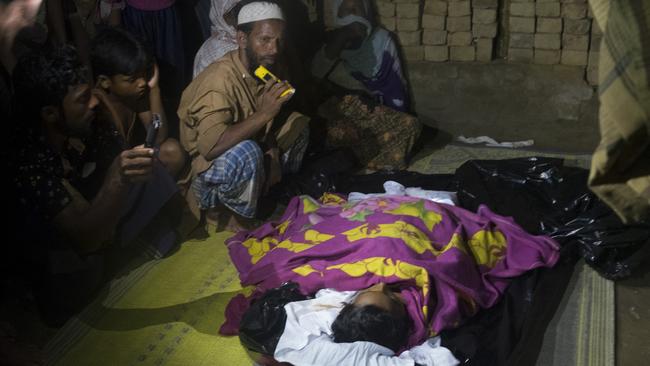
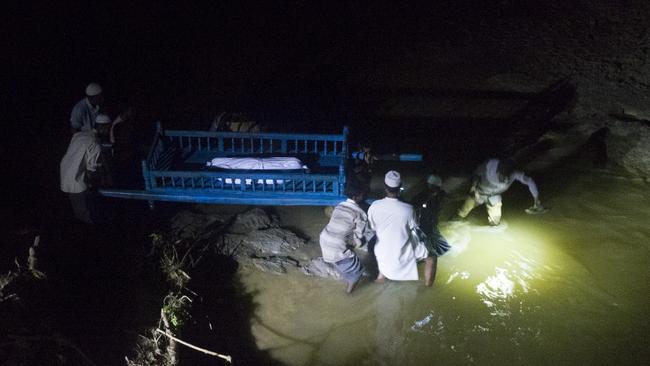


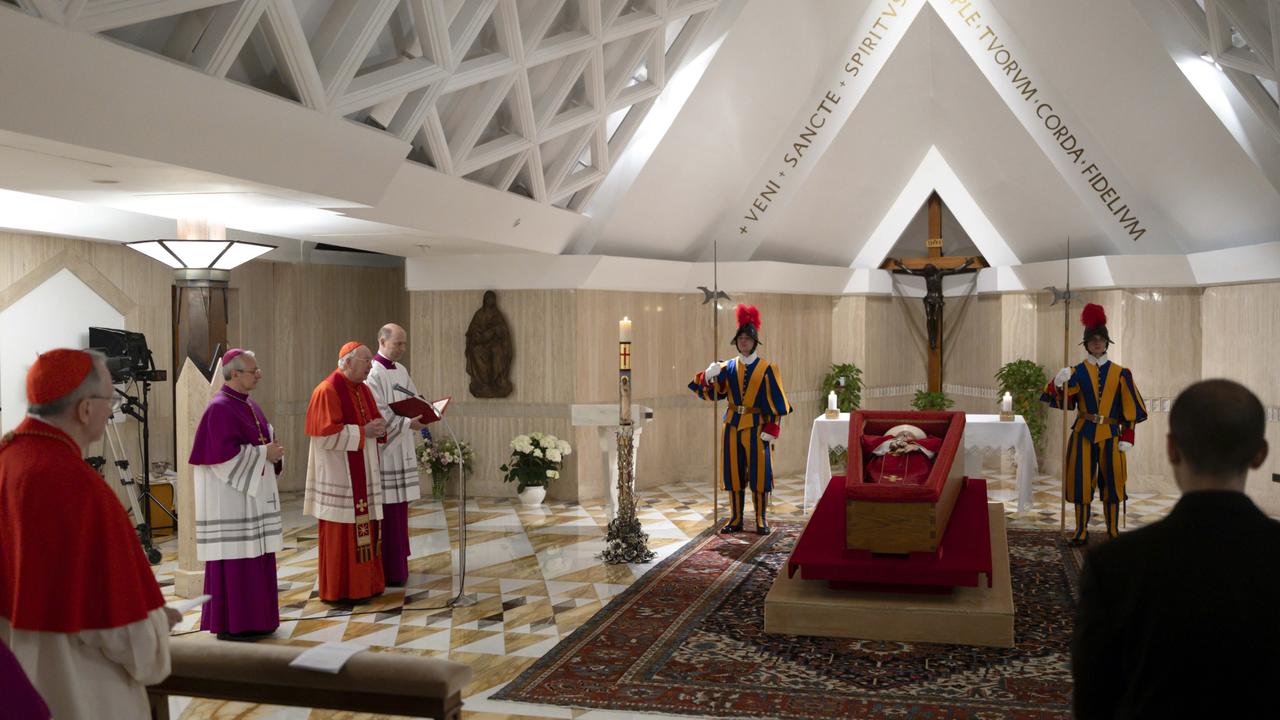

To join the conversation, please log in. Don't have an account? Register
Join the conversation, you are commenting as Logout